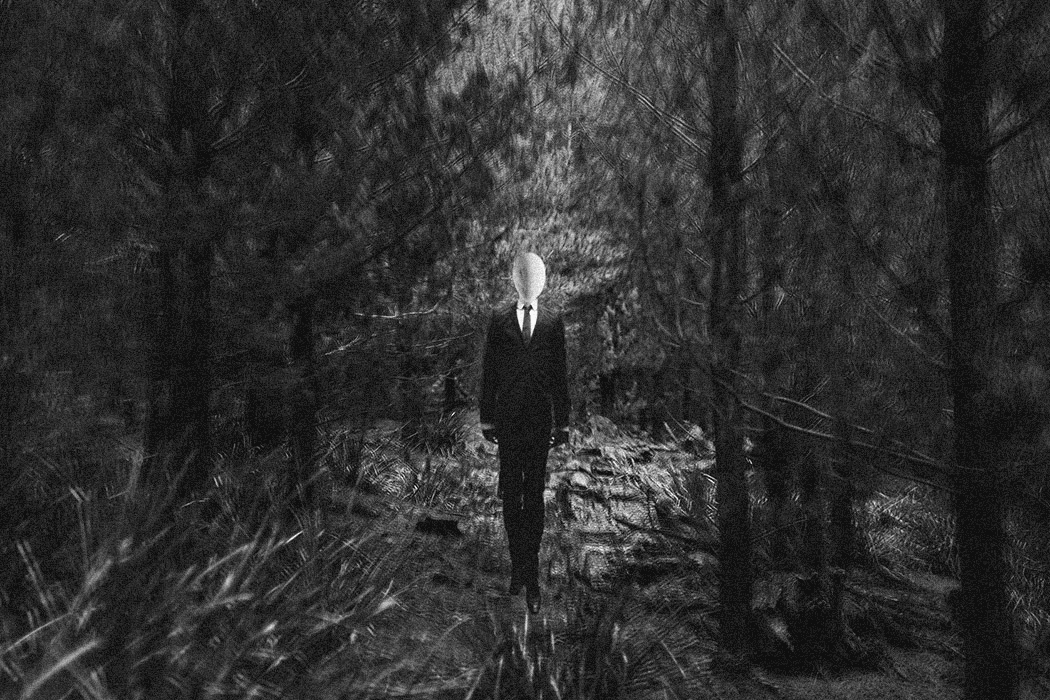One does not need to have read Bram Stoker’s Dracula to know the character by heart: A well-dressed, suave gentleman with a veneer of aristocratic panache and a foreign accent, disguising a penchant for dining on spurting carotid arteries and flying around bell towers. He is powerless by day yet physically invigorated by night, gleefully digging into innocent children and virginal young women as he descends upon the darkened streets of London.
Like any archetypal monster, to understand Dracula is to understand the collective fears and anxieties of the time and place he was created. Greg Buzwell, Curator of Contemporary Literary Archives at the British Library, sees Dracula as a distillation of mounting moral panic in respectable late-Victorian society. As a foreign invader who shamelessly corrupts chastity, devours the young, and spreads mind-altering disease, Dracula summarized contemporary attitudes which viewed women enjoying sex as a moral aberration, feared the decline of the British Empire, and bemoaned the influx of Eastern European immigrants as a grim harbinger of multiculturalism.
Weekly Newsletter
In the years since Dracula sent God-fearing Victorians cowering under their bedsheets, the cultural conception and proliferation of monster lore has operated in similar fashion. Over seventy years later, the myth of “Halloween sadism” would grip American suburbia, as paranoid parents searched their children’s trick-or-treat bags for hidden razor-blades gifted by evil neighbors. This, according to sociologists Joel Best and Gerald T. Horiuchi, was a symbolic expression of the rising levels of distrust towards “outsiders” experienced by Americans in the aftermath of the 1960s, a decade punctuated by social progressivism and cultural upheaval.
Even the etymological history of the term “monster,” points to the role they play in the cultural zeitgeist of fear. Its origins lie in the ancient Proto-Indo-European term, men, meaning to remember, think, or be mindful. Through the ages, this word would follow several routes, transfiguring into the Latin terms monere (to remind, warn, or advise), and monstrum (a divine omen or entity which evokes fear and wonder). Today’s modern verb “demonstrate” holds ancestral roots in monstrare from which the term “monster” derives. These terminological developments and derivations act as a poignant summation of our complicated personal relationship with monsters. We see them as a demonstrative pantomime of the fears and paranoias that swamp the collective subconscious, which in turn fosters a heightened mindfulness of every potential danger.
It is our biological programming that facilitates the instinct to materialize monsters in mainstream discourse, as observed by an Oklahoma State University study published in 1999. Researchers D. Todd Donavan, John Mowen, and Goutam Chakraborty found that we are much less likely to possess the “intent to communicate” an urban legend if the story features an altruistic character with a positive ending. A similar study by Jean Fox Tree and Mary Susan Weldon from 2007 asserted that, “every repetition increases the story’s credibility, its importance, its scariness, and its likelihood of being retold.” In essence, our brains are hardwired to circulate data of the sensational or horrific kind, and when it comes to monsters who hold a symbolic link to real-life paranoia, enthusiasm is unrivaled.
Yet in the past twenty years, something drastic has occurred in the conventional process of monster creation. It has been well established that monsters are only as influential as how far their story can spread to readers. This variable has been astronomically boosted by the introduction of the Internet. Think of a story or character in the context of viral dynamics. Just as a virus is transmitted from one host to another, so is a story; from person to person it permeates, infects, mutates. The reach of a virus lies in its durability, and if the common flu virus thrives best in chilled, dry environments, the Internet is a perennial winter for stories. It exists as a fertile ground, blessed with a dense population, lack of geographical limitations, and quickened transference process. Couple that with our predisposed tendency to react passionately to fear-based narratives, and you have the perfect habitat for ghouls and bogeymen to breed.
Perhaps the most famous of all the monsters to emerge in the age of digital networking was Slender Man, who made his debut in 2009 on the message board Something Awful. The character’s traits and trademarks are the highly derivative of the immemorial “child snatching” monster cliche that has lurked in the nightmares of spooked tots for centuries. In her essay, “They Are Watching You: The Slender Man and the Terrors of 21st Century Technologies,” Professor Lynn Gelfand points to the character’s “deep roots in traditional lore who also embodies the darker side of emerging technologies.” He exists in flux between ancient fears and digitally-mediated communication, the latter of which has shifted the traditional proliferation of folkloric narratives into a state of accelerated authorial reinvention and mass participation.
Innovations in user interfaces, coupled with the freedom from censorship and editorial vetting afforded by some social media platforms, has enabled Slender Man to be freely adapted and mass-produced into various formats by content creators, such as video games, fan fictions, cosplays, performance art, memes, and music. This new form of multimodal storytelling, also known as “transmedia storytelling” conceptualized by media scholar Henry Jenkins has been found to provide a particularly immersive experience for those absorbing a narrative through “multiple delivery channels.”
Having a vast digital playground in which to build and share our monsters is a liberating activity for some, although authorial control and influence over online creations is never guaranteed. Facilitated by the participative culture of online platforms, the numerous retellings and interpretations of Slender Man’s humble origins have become a mere footnote. Unlike previous child-devouring beasts, there is no solid indication of Slender Man’s backstory; his tale simply weaves between mediums and authorial outputs without losing the central thematic baseline of predation. He thus possesses an unsettling ambiguity, reinforced by his eternally silent demeanour and featureless face. This is common for monsters created in the digital age. Their traits, or lack thereof, are synonymous with the structurally chaotic, amorphous nature of the virtual environment into which they are born. This technologically enhanced edition of culturally collaborative storytelling has subverted the tradition of linear narratives existing within singular mediums. This would likely explain why mainstream movie adaptations of internet monsters (Slender Man, Karen, and The Rake have each received this treatment) have tended to fail critically and financially. When you shoehorn a characteristically nebulous concept or character into horror plot conventions, their original impact is dulled.

This is not to say that all internet monsters have had to shroud themselves in semantic ambiguity and mystery to achieve viral success. Jeff the Killer, who originated several years after Slender Man, possesses a particularly detailed backstory involving a bullied teen who turns insane, mutilates his face, and becomes a serial killer. Such stories are collectively referred to as “creepypastas” a portmanteau of the words “creepy” and “copypasta,” the latter of which concerns the popular user interface feature of cut, copy, paste, in reference to the remarkable ease through which a block of text can be delivered across multiple platforms.
Creepypasta storylines often capture themes of internet safety, a particularly fraught topic in an era when many parents unfamiliar with new-fangled social media platforms are trying to moderate the activity of their tech-savvy kids. Monsters like Slender Man have become emblems of a broader conversation around how emotionally susceptible children can be to a particularly terrifying story, especially when it employs the beguiling immersion of transmedia delivery. In the Journal of Media Literacy Education, Sarah Gretter, Aman Yadav, and Benjamin Gleason noted the effects of “narrative transportation” that the issue is widespread enough to warrant an introduction of “media literacy” in school curricula, which would help children to become more discerning of the blurred lines between fact and fiction online.
The most extreme case of children falling victim to the whims of internet monsters was the infamous Slender Man stabbing in 2014, when two twelve-year-old girls enamoured with the elusive figure plotted to lure a friend into the woods and kill in a sacrificial offering. Thankfully, the victim survived the ordeal. This is not the first time that monsters have become feared enough to transgress the bounds of fiction. In 1804, following rampant rumors of attacks by a malevolent spirit in Hammersmith, London, an armed patrol of proto-Ghostbusters set out to capture it. On one such patrol, an innocent bricklayer wearing a distinctive white uniform was shot dead by a spooked patrolman who mistook him as the ghost.
This has been known to occur on a much larger scale, as was observed when the US Capitol was stormed by insurrectionists on January 6th, 2021, who were confident in the belief that the presidential election had been stolen from Donald Trump. Some amidst the crowd who congregated that day were fuelled by yet another classic monster trope, casting Trump as the stake-wielding Van Helsing against the bloodsucking, foreign, all-powerful, pedophilic baby-eaters who sought to destroy him. The group’s war against cannibalistic political elites had been bubbling under the surface for decades, going as far back as the Satanic Panic of the 1980s, which sent parents into hysterics over rumors of demonic rituals being performed on pre-schoolers.
Social activism and upheaval have produced monsters on all ends of the political spectrum, though sometimes this is in the interest of cataloguing a particularly unsavory pattern of behavior amongst the general population. The term “Karen,” to describe “an obnoxious, angry, entitled, and often racist middle-aged white woman who uses her privilege to get her way or police other people’s behaviours,” per an online dictionary, is one such example. She is a formidable rendering of existential horror, symbolizing the long history of white women weaponizing their status to initiate deadly systems of oppression against minority groups. Karen has achieved a status comparable to the elusive cryptid Bigfoot, with observers using phrases such as “Karen spotted,” “Karens in the wild,” or, “Karen sightings” to denote a recorded encounter. Just as Bigfoot is categorized by its tall stature, pendulous limbs, and of course, large hairy feet, the anatomy of a Karen has been well documented; her most commonly highlighted attributes are the smartphone as her weapon, inverted bob hairstyle, and belligerent demands to speak to the manager.
Whichever way one interprets, monsters act as a creative affirmation of humanity at its most vulnerable and ugly. They display our perennial anxieties, our inbuilt urge to survive, and our proclivity to dehumanize and discriminate. They can be tools used for creative expression, social activism, and oppressive stereotyping. Yet as we move further into an era of all-encompassing reliance upon online networks, where the act of quashing misinformation and insidious conspiracies has become an arduous game of whack-a-mole, the monster’s detrimental side has been emboldened.
Perhaps the solution lies in the monster’s most ancient etymological iteration—men, to think. If we can come to acknowledge the inhuman monster as an extension of our own flawed humanity, we can hopefully assimilate towards a healthy mindset of both meta-awareness and analytical proficiency when engaging in online narratives. The key is to not expunge monsters from creative spaces and stories, rather to repurpose the understanding of the concept as a critical vehicle for personal introspection. On July 1, 1897, Bram Stoker was interviewed by a reporter of the British Weekly, who asked him if Dracula offered any moral lessons for terrified readers. “I suppose that every book of the kind must contain some lesson,” Stoker intriguingly responded. “But I prefer that readers should find it out for themselves.”
Support JSTOR Daily! Join our new membership program on Patreon today.







